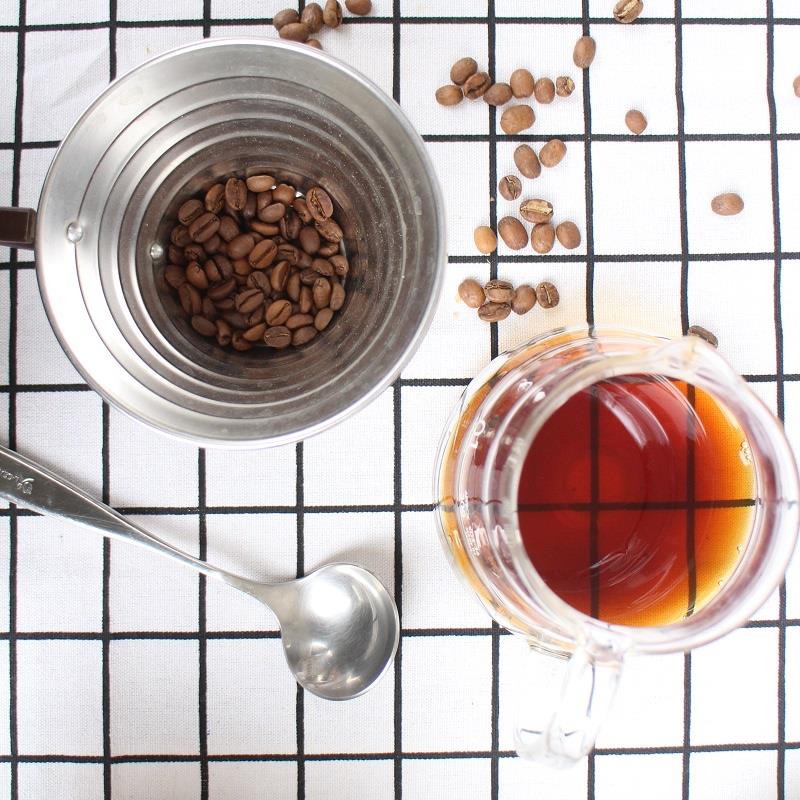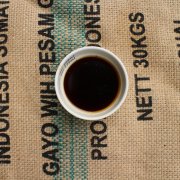Tanzania Coffee Manor Mwenga Estate Story Information introduction to the current situation of coffee producing areas in Tanzania

Professional coffee knowledge exchange more coffee bean information please follow the coffee workshop (Wechat official account cafe_style)
East Africa is the producer of many fine coffee, including Kenya, Ethiopia, Rwanda and so on. Tanzania is another country that produces good coffee in East Africa. In 2008, Direct Coffee introduced the sweet and fragrant Tanzania Kighoma beans that impressed many people.
Coffee is the largest crop in Tanzania. About 450000 people are engaged in coffee-related agriculture. Due to its proximity to Kenya, the flavor of Tanzanian coffee tends to be similar to that of Kenyan coffee, but because of inconvenient transportation and backward basic coffee equipment, coffee is often contaminated during transportation or damaged due to insufficient equipment in the treatment process, resulting in a bad impression of Tanzanian coffee. It is thought that the overall sour quality of Tanzanian coffee is less fresh and less strong, but in the past two years, the southern Ruvuma producing area near the Indian Ocean has convenient transportation conditions, coupled with the contract with European and American raw bean merchants to place the order before releasing the coffee to ensure the quality of the coffee. The main tree species of coffee in Tanzania is Arabica. The coffee beans are treated by natural washing. The coffee grade is the same as that in Kenya, and the AAA grade is the best. The sales of high-quality coffee are auctioned and sold directly. In the new season of 2010, the coffee produced by Ruvuma was introduced. The raw coffee beans are emerald green, and the coffee particles with uniform uniformity have better semicircle shape than Kenya AA grade.
Source of Tanzanian beans: in 1898, bourbon coffee was introduced by Catholic priests to the Kilimanjaro region of Tanzania. Then the Kent species was introduced in 1920. Therefore, up to now, the coffee in Tanzania is mainly bourbon and Kent.
Coffee varieties:
70% of Arabica is planted between 1000 and 2500 meters.
30% of Robusta is planted between 800 and 900 meters.
3 major planting areas:
North: harvest season 1 and 2: July-December
West: March and 4 harvest season: may-October
South: may and June harvest season: July-December
The total planting area is about 250000 hectares.
The taste of coffee:
Tanzania is a typical East African country, bordering Kenya and Uganda to the north, Malawi, Mozambique and Zambia to the south, and Rwanda and Burundi to the west. Many people like to compare Tanzanian coffee with his neighbor Kenya. Compared with Kenyan high-quality coffee beans, Tanzanian coffee has less bright acidity, softer beauty and more sweetness. The strong smell of red wine is also a characteristic of Tanzania.
Mount Mt Kilimanjaro, Africa's highest peak, stands in northeastern Tanzania, known as Trusteeship after World War I. it was once under British colonial rule and became independent in 1964. Bourbon strain coffee was first introduced and planted in 1893, raw beans were mainly treated with water washing, and high-quality high-altitude Tanzanian coffee was of good quality, just like Kenya has active and bright acid performance.
The coffee producing areas in Tanzania are Moshi, Mbeya and other producing areas around the foothills of Kilimanjaro in the north, and the Songea-Ruvuma area where the Ruvuma river flows to the south. The style is slightly different due to the different growth topography. The coffee produced in the Ruvuma region of southwestern Tanzania has wine and fruit aromas, which is different from the coffee near Mount Mt Kilimanjaro in the north.
Kilimanjaro is located in northeastern Tanzania and is the largest coffee producing area in Tanzania, which accounts for 75%. In general, Tanzanian coffee beans have extraordinary quality. The important producing areas are in the mountains near Kenya in the north. Coffee farmers grow 85% of the coffee, while local coffee farmers grow coffee at an altitude of 1300-2000m. Its coffee flavor is different from that of neighboring Ethiopia and Kenya. It has the characteristics of two countries, and its thick body has both fruit and flower aroma, so it is worth a try. Coffee belongs to dicotyledonous plants. Generally speaking, there are two pairs of coffee seeds in a coffee cherry fruit, which is what we call coffee beans.
Compared with pair of flat-sided beans, also known as caracol or caracolillo, it means little snail in Spanish. The production of round beans, botanically, is said to be due to uneven pollination (Arabica coffee is a self-pollinating plant, and if a coffee flower has only one ovary or only one ovary has successfully pollinated, it can only produce one seed). Or uneven nutrition during growth (usually more likely to occur in the coffee fruit growing at the end of the coffee tree), the nutrients are absorbed by only one of the cotyledons Only the cotyledons that get the nutrients and continue to grow grow into a single oval, oval-shaped coffee seed, hence the name of the round bean. Normally, the proportion of round beans produced by coffee plants is about 3 to 5%, which is relatively rare, and because the shape and size of coffee beans are different from those of normal coffee (flat) beans, round beans are often singled out and sold independently.
The northern coffee is full of aroma, bright acidity, mellow taste, and thanks to the rich volcanic soil, it has the sweetness of mineral water.
Southern coffee is rich in floral aromas, smooth on the palate with elegant acidity.
Coffee growing areas in Africa-Tanzania Coffee is produced in the soil-rich East African Rift Valley and is an outstanding representative of high-quality coffee from this region. Its refreshing acidity and medium mellowness complement sweet citrus and floral aromas. This coffee tastes great whether it's a hot drink or iced coffee. With oranges or berries, it can show its bright flavor.
Tanzania AAA
Place of origin / manor Mwenga Estate
The geographical environment of production is 1600-1900 meters.
Treatment mode washing
Taste special bright aroma, not wild not choking fruit acid
Important Notice :
前街咖啡 FrontStreet Coffee has moved to new addredd:
FrontStreet Coffee Address: 315,Donghua East Road,GuangZhou
Tel:020 38364473
- Prev

Tanzania Coffee Kagera Kagera Region Information Introduction Tanzania and Kenya Coffee Region
Professional coffee knowledge exchange More coffee bean information Please pay attention to coffee workshop (Weixin Official Accounts cafe_style) Tanzania is a country with rich coffee history and a large coffee planting area. The main producing areas are Mount Kilimanjaro and Mount Meru. They are two volcanoes with very fertile soil. The coffee system and flavor are similar to Kenya, and coffee is the most important economic coffee in the country.
- Next

Starbucks Coffee-Rwanda Sholi Shuli Cooperative Story Information Coffee classroom label significance
Professional coffee knowledge exchange more coffee bean information please follow coffee workshop (Wechat official account cafe_style) STARBUCKS RESERVE RWANDA SHOLI about coffee bean label pattern label inspired by the spirit of mutual help between coffee cooperatives and cooperatives run by women. The image of connecting hands is depicted in the design to praise this beautiful and meaningful
Related
- Does Rose Summer choose Blue, Green or Red? Detailed explanation of Rose Summer Coffee plots and Classification in Panamanian Jade Manor
- What is the difference between the origin, producing area, processing plant, cooperative and manor of coffee beans?
- How fine does the espresso powder fit? how to grind the espresso?
- Sca coffee roasting degree color card coffee roasting degree 8 roasting color values what do you mean?
- The practice of lattes: how to make lattes at home
- Introduction to Indonesian Fine Coffee beans-- Java Coffee producing area of Indonesian Arabica Coffee
- How much will the flavor of light and medium roasted rose summer be expressed? What baking level is rose summer suitable for?
- Introduction to the characteristics of washing, sun-drying or wet-planing coffee commonly used in Mantenin, Indonesia
- Price characteristics of Arabica Coffee Bean Starbucks introduction to Manning Coffee Bean Taste producing area Variety Manor
- What is the authentic Yega flavor? What are the flavor characteristics of the really excellent Yejasuffi coffee beans?

